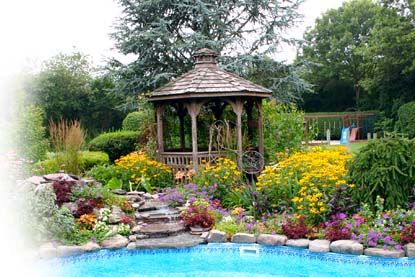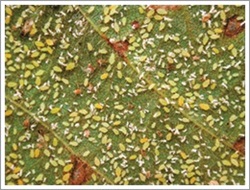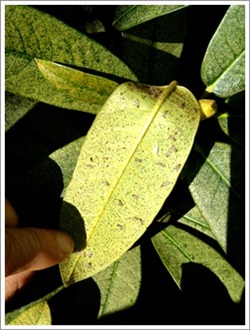


 Aphids:
Aphids:
Aphids are soft bodied insects usually found on the underside of leaves sucking nutrients from there host and turning it into a product called honeydew. Most of the time they go undetected and there populations are kept in check by natural predators like lady beetles. Usually the way you find out the populations are high is there honeydew creates a sugary film on any surfaces under the tree.Aphids can produce a new generation every 10 days so on rare occasions they can actually cause a tree to defoliate or even be a major contributor to plant death.
Hosts:
The most common hosts in portland are Tulip Tree, Linden, walnut, birch, Maple, elm and they also love roses.
Organic Treatments:
Neem Oil before bud break followed by several thorough high pressure washings with insecticidal soap making sure extra attention to the underside of leaves is given. this should be done several times in mid to late spring.
Non-organic Treatment:
0ne or two Soil drench application of a systemic insecticide. This can be from spring to fall and takes about 3-6 weeks to take affect depending on conditions.
Arbor-jet systemic Tree Injection will gain control with 1 application in 3-5 days
 Lace Bug:
Lace Bug:
Lace bug are a small piercing sucking insect that have reached in my opinion epidemic numbers in many areas of Portland. They will be on the underside of rhododendron and Azalea leaves. There attack sites cause brown tar spots on the underside of the leaves and stippling on the tops which will eventually merge into an almost solid yellow/white color at which point the host has a very hard time processing the suns supportive rays. If left untreated they will eventually cause plant fatality.
Host:
Almost all rhododendrons and azaleas.
Organic Treatment:
4-5 applications from late spring to summer of Azasol concentrate which is a contact and Systemic pesticide derived from the neem plant.
Non-organic Treatment:
2 application of foliar systemic insecticide applied from spring to Summer.
Bronze Birch Borer:
Bronze Birch Borer populations are rapidly increasing in the NW. moving here from Long Island NY I have seen the potential damage they can cause. The borer lays eggs in cracks and crevices in May and June. They wast no time burrowing into the bark then feeding on the vascular part of the trunk. This will shut down the flow of nutrients and fluids from the roots to the leaves and eventually the tree dies branch by branch.
In almost every case of birch borderer I have seen a secondary vascular fungal infection is present so it is best to treat for both.
Host:
A rule of thumb is the whiter the birch the more susceptible they are to attack.So Himalayan or European birches are not a good idea to plant. I recommend river birch as i have not had to treat any for birch borer to date.
Organic Treatment:
There are no organic treatments at this time however trees that were planted correctly and taken good care of seem to have a much lower infection rate.
Non-organic Treatment:
Directly injecting a systemic insecticide and Organic phosphorus fatty acids into the trunk of the tree works best and takes 3-5 days to gain control. However branch die back on birches is usually from damage caused 1-2 years prior. Heavily infected trees with more than 30% die back should be removed.
 Daventry Web Design
Daventry Web Design